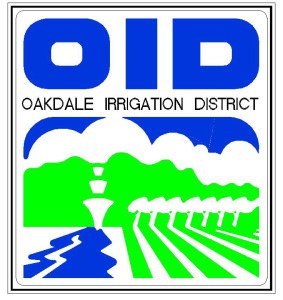

An above-average snow season in the Sierra means flows on the Stanislaus River will be higher than normal through June, raising safety concerns. Boaters, rafters, canoers and other river-goers are reminded to use caution and take appropriate safety measures while enjoying the river this summer.
Officials at the Oakdale and South San Joaquin irrigation districts reported that the federal Bureau of Reclamation, which operates New Melones Reservoir, will be sending more water than normal down the river to create space behind the dam for snow runoff and to meet pulse flow requirements to assist juvenile salmon in their outmigration efforts.
Pulse flows are intended to help the small parrs and smolts (stages of juvenile salmon) begin their perilous journey down the river, through the Delta and, eventually, to the Pacific Ocean.
As of Monday, June 3, the river was running at about 1,600 cubic feet per second (cfs). Flows will range from 800 cfs to 1,200 cfs for the rest of the month in a final effort to encourage any remaining juvenile salmon to move downstream. Typically, by the end of June, flows have slowed to about 300 cfs, where they stay most of the summer.
Higher flows create hazardous conditions most people are not accustomed to. If you must go near the river, it is advised to wear a life jacket at all times. Free life jackets can be reserved and checked out at five locations of the Stanislaus Consolidated Fire Department for use on the river. Those include Station 26 at 3318 Topeka St., Riverbank; Station 27 at 450 S. Willowood Drive, Oakdale; Station 28 at 325 E. G St., Oakdale; Station 29 at 17700 Main St., Knights Ferry; and Station 30 at 13200 Valley Home Road, Valley Home.
Life jackets come in sizes for adults to small children. For more information, call 209-869-7470.
This month’s high flows are not just for fish, however. The California Department of Water Resources, in its final snow survey for 2019, said the Sierra snowpack is as much as 188 percent of normal in some locations. The report estimates there is still more than 1 million acre-feet of water in the Stanislaus River basin remaining as snow that will run off this year. New Melones – the state’s fourth-largest reservoir – currently holds more than 2 million acre-feet of water, which is 134 percent of what it normally has at this time. Releasing water now will create space to capture all that snow runoff well into the summer.
Residents are also reminded that though the daytime temperatures are soaring, the water temperature remains cold, at about 60 degrees and can cause hypothermia if people are in the water for even a short amount of time.
The Stanislaus River and its series of nine parks from the McHenry Avenue Bridge east to Knights Ferry – collectively known as the String of Pearls – are a popular summertime playground. The parks provide access for boaters, kayakers, rafters, hikers and fishermen.
The South San Joaquin Irrigation District was established in 1909 and is located in Manteca. It provides agricultural irrigation water to about 55,000 acres in Escalon, Ripon and Manteca. In 2005, the district expanded into providing domestic water service to selected cities within its territory. The Oakdale Irrigation District was created in 1909 and provides agricultural water to about 62,000 acres in northeastern Stanislaus County and southeastern San Joaquin County.
OID and SSJID hold senior water rights on the Stanislaus River. For more than 100 years, the agencies have delivered surface water to farms in San Joaquin and Stanislaus counties, and for SSJID, thousands of homes in San Joaquin County.





